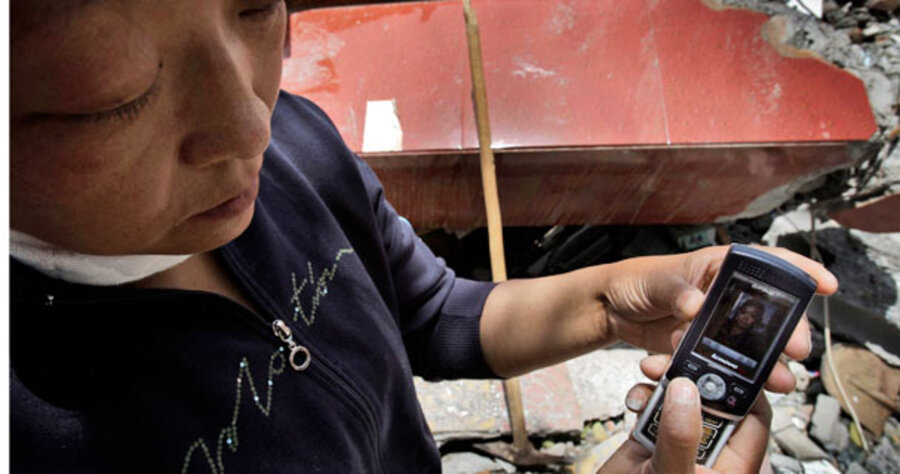When disasters strike, citizen journalists turn to Twitter
Loading...
When an earthquake struck China’s Sichuan Province last week, some of my colleagues from NPR just happened to be in the area. In Chengdu to do a series on China in advance of the summer Olympics, they immediately switched gears and swung into action to cover the disaster.
But they were not the first to report in the US about the earthquake. That honor actually fell to Robert Scoble, a blogger who happened to be watching Twitter on Google Talk and noticed that several people in China reported that an earthquake was happening while it was still in progress.
(A quick interruption to go over some of the terms above: Twitter is a social-networking site that specializes in what’s called “microblogging.” It’s been around since 2006. Users can send short, 140-character messages to anyone who has subscribed – free of charge – to receive their “tweets.” Subscribers are known as “followers.” You can also post to any Twitter account that you belong to. Google Talk is an instant messaging client offered by, of course, Google.)
Mr. Scoble immediately sent out the news on his Twitter account, which has one of the largest lists of followers.
He put in links to point to anyone who was twittering about the quake for the next couple of hours. He had the news out an hour before the major news networks mentioned it, and 90 minutes before it was confirmed by the US Geological Survey.
“It’s amazing the kind of news that you can learn by being on Twitter and the connections you can make to people across the world,” Scoble wrote in his blog this week.
And Twitter wasn’t the only website spreading the initial word of the quake. In China, bloggers like Song Shi-nan, who happened to be blogging in Chengdu the moment the quake hit, immediately started writing about what he saw both in the area around him and on Chinese TV.
He was later joined by other bloggers, such as TV reporters Luqui Luwei, who was among the first to ask why so many Chinese schools had been destroyed in the quake yet so many government buildings were still standing.
This is the kind of citizen reporting that journalist/blogger Dan Gillmor and cyberactivist/blogger Jeff Jarvis had been talking about for years.
In a previous column, I had written about how blogs and other social-networking tools could be tapped by the mainstream media to learn about events more quickly and to even get story tips. I’ve personally used Twitter several times as a source of information on stories.
It’s at that point, I often hear my editors ask, “How do you know you can trust it?” On the one hand, having so many sources of information is somewhat of a reporter’s dream come true. On the other hand, you don’t know most of the people who use Twitter, so it’s difficult to know whom to trust.
Andy Carvin, who has advocated using social networking in media for several years, argues that the Twitter community acts as a self-correcting group, and that the community itself provides checks and balances.
He points to another earthquake, this time a recent tremor felt in northern Virginia, where citizen journalism unfolded much like it did in China. People used Twitter to send out news that something unusual had just happened and to describe the incident. As more people used Twitter to relate their experiences, the information base grew.
Then someone mentioned that it might have been an explosion, an erroneous tangent aided by a faulty news report that attributed the tremors to an explosion at a US Army base.
But almost immediately, members of the Twitter community asked “What are you basing this on?” Next, they traced the thread of the story back to the people who had originally mentioned the tremors. The community soon realized that the Twitter posting and the news story were wrong and steered the story back on track.
“People who are using Twitter [to report news events] aren’t so much journalists,” Mr. Carvin says. “They describe what they experience and try to connect the dots.”
That “open source” model of checks and balances – possible because of the number of people who use the tool – means that someone is often able to correct misinformation in a very timely manner, he adds.
The truth is that, as journalists, we are always looking for a way to get reliable information in a more timely manner.
Ultimately, media organizations will want to have their own people cover a breaking news story.
But in those first few hours, social-networking tools such as Twitter, instant messaging, and blogs are proving to be increasingly valuable allies in the quest to inform the public about what’s happening in the world at any particular moment.





